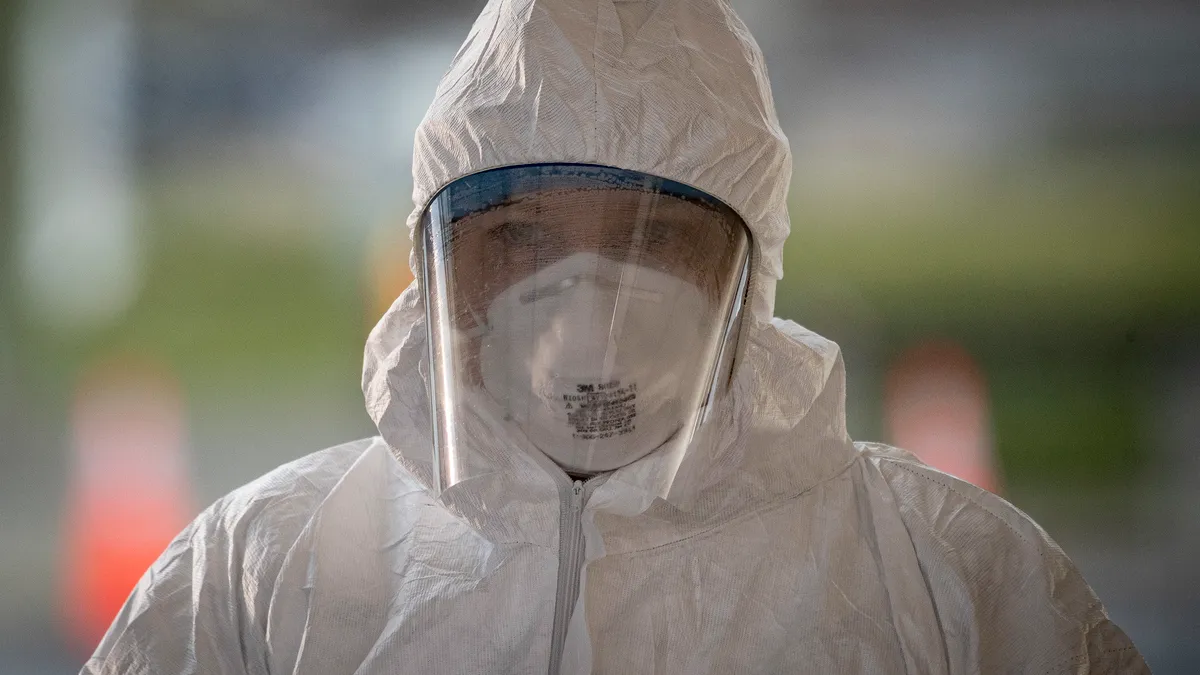Dive Brief:
- 3M is crediting an operational change earlier in 2020 that combined manufacturing, supply chain and customer operations for helping it to increase production and respond to demand created by the coronavirus pandemic, company executives said on a Tuesday earnings call.
- 3M CEO Mike Roman said the new model, which took effect at the beginning of the year, allowed the company to reduce "production planning cycle times by 70% across our portfolio of businesses."
- The company said it should better track demand and ensure production levels are sufficient for current demand patterns. 3M plans to reduce its overall inventory as a result and it has "targeted significant inventory reductions," Roman said.
Dive Insight:
3M is managing fluctuations. Demand for N95 masks and healthcare equipment are on the rise, while other items are seeing a demand slump, Roman said. 3M has responded to this with an operational pivot: significantly ramping up production in some areas but cutting inventory elsewhere.
To meet the demand for N95 masks, 3M relied on extra "surge" capacity it invested in following the SARS outbreak. That capacity has "largely remained idle for the last two decades, except for emergencies such as H1N1, the Japanese tsunami and wildfires in California and Australia," Roman said.
"When the virus broke out, we were able to immediately activate our surge capacity and maximize production to support the public health response," he said."Beginning in January, 3M doubled our global output of N95 respirators to 1.1 billion per year or about 100 million per month, including 35 million per month in the U.S."
3M's new operating model reorganized the company, directing international employees report to their specific business unit rather than a separate international team, executives said on an earnings call in January. An international footprint helped it to make changes early on, Roman said this week.
"Our learnings from China, which was impacted by the virus first, helped guide our actions worldwide and made a significant difference in our ability to rapidly prepare and respond," he said.
Steady demand in some areas was not enough to offset drops elsewhere.
Healthcare providers have stopped performing elective procedures to open up the system's capacity, automotive factories have been shuttered, and offices remain empty. 3M, a supplier to all these industries, has taken a hit. The company's sales have been down about 20% in the Americas through late April, and the company withdrew guidance for the year, according to slides from the earnings call.
3M plans to cut its costs $350 million to $400 million in the second quarter. Along with inventory reductions, a hiring freeze and cuts to contract hiring will play into reducing costs, Roman said.
The cuts lead to a "better than expected bottom line" for 3M, according to a research note from JPMorgan emailed to Supply Chain Dive.















